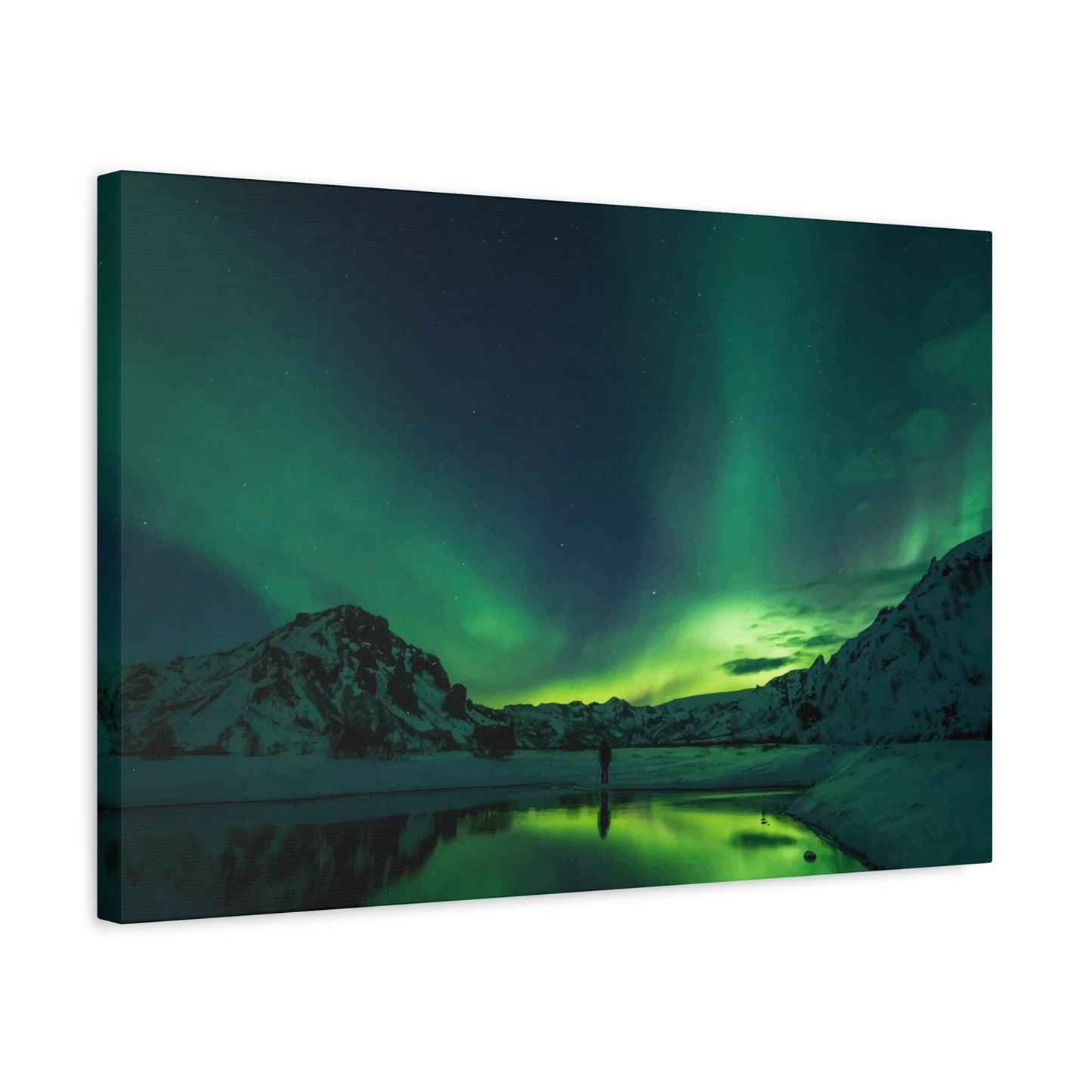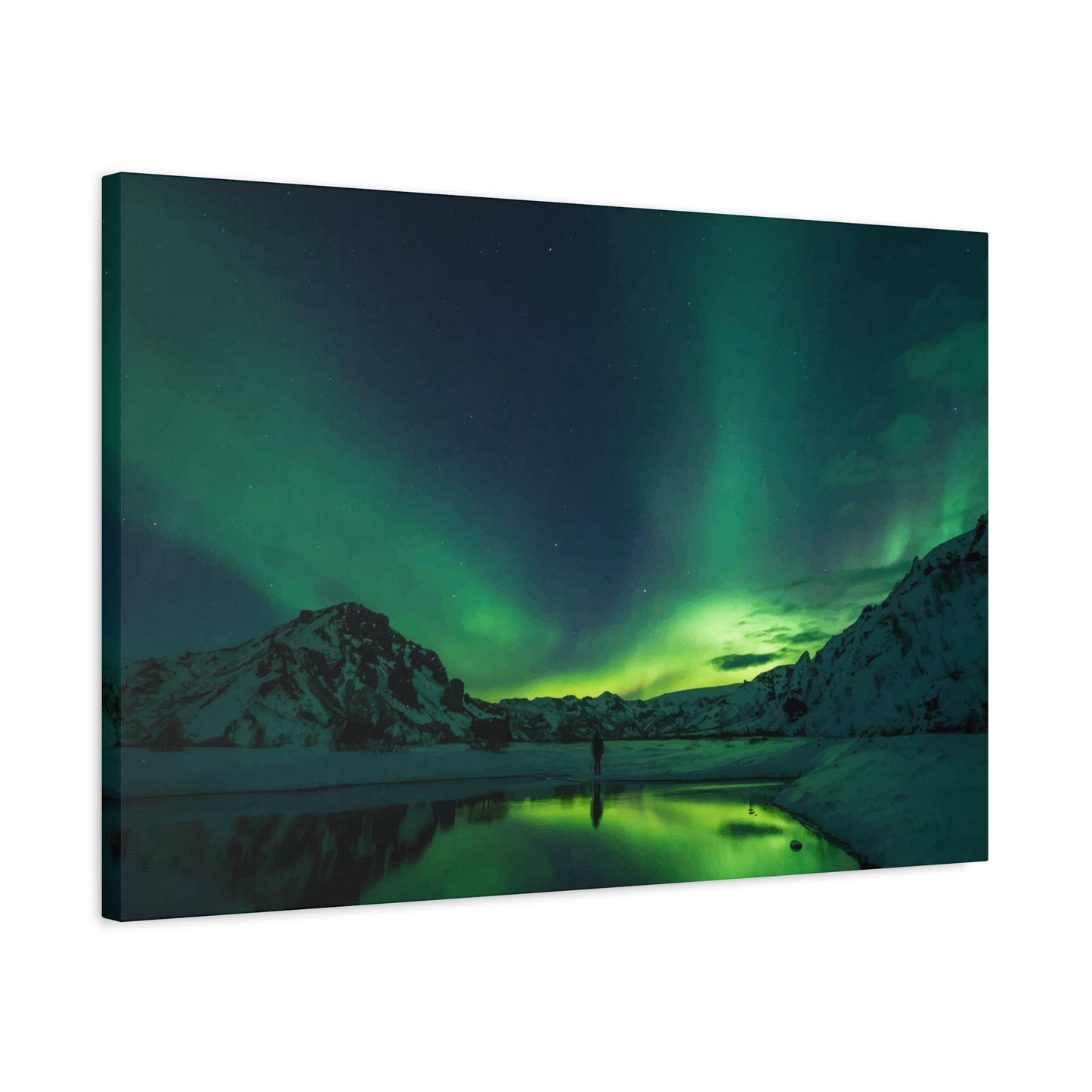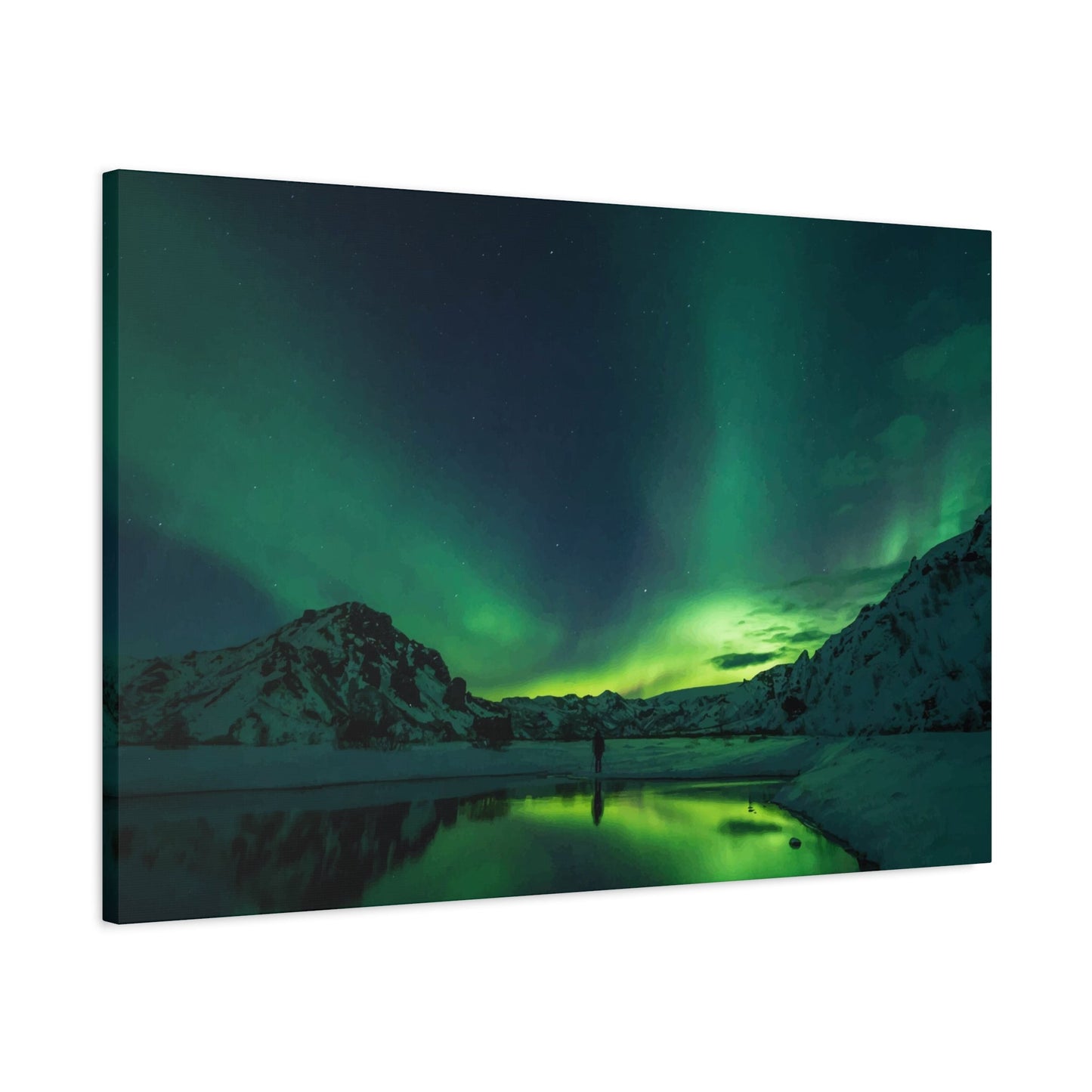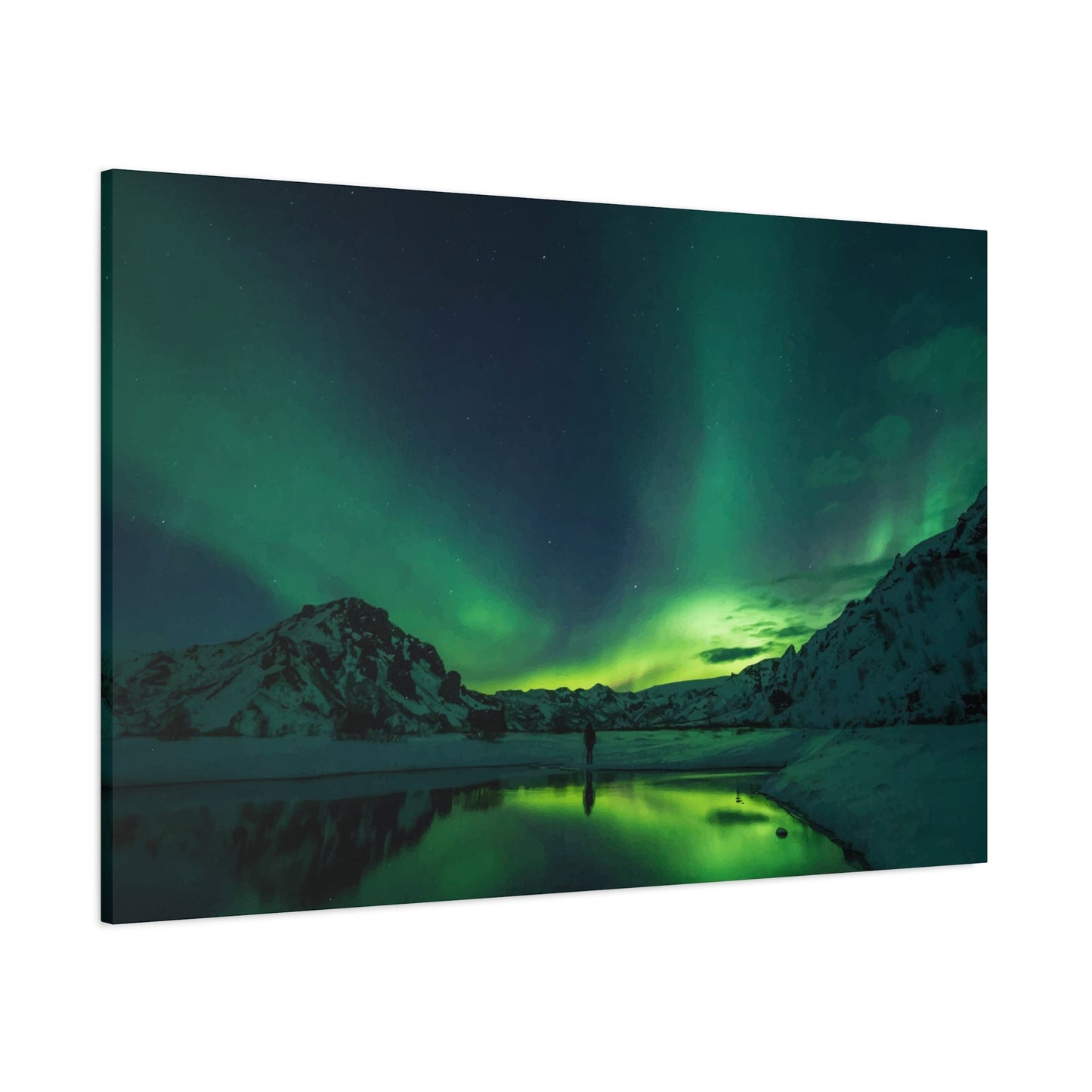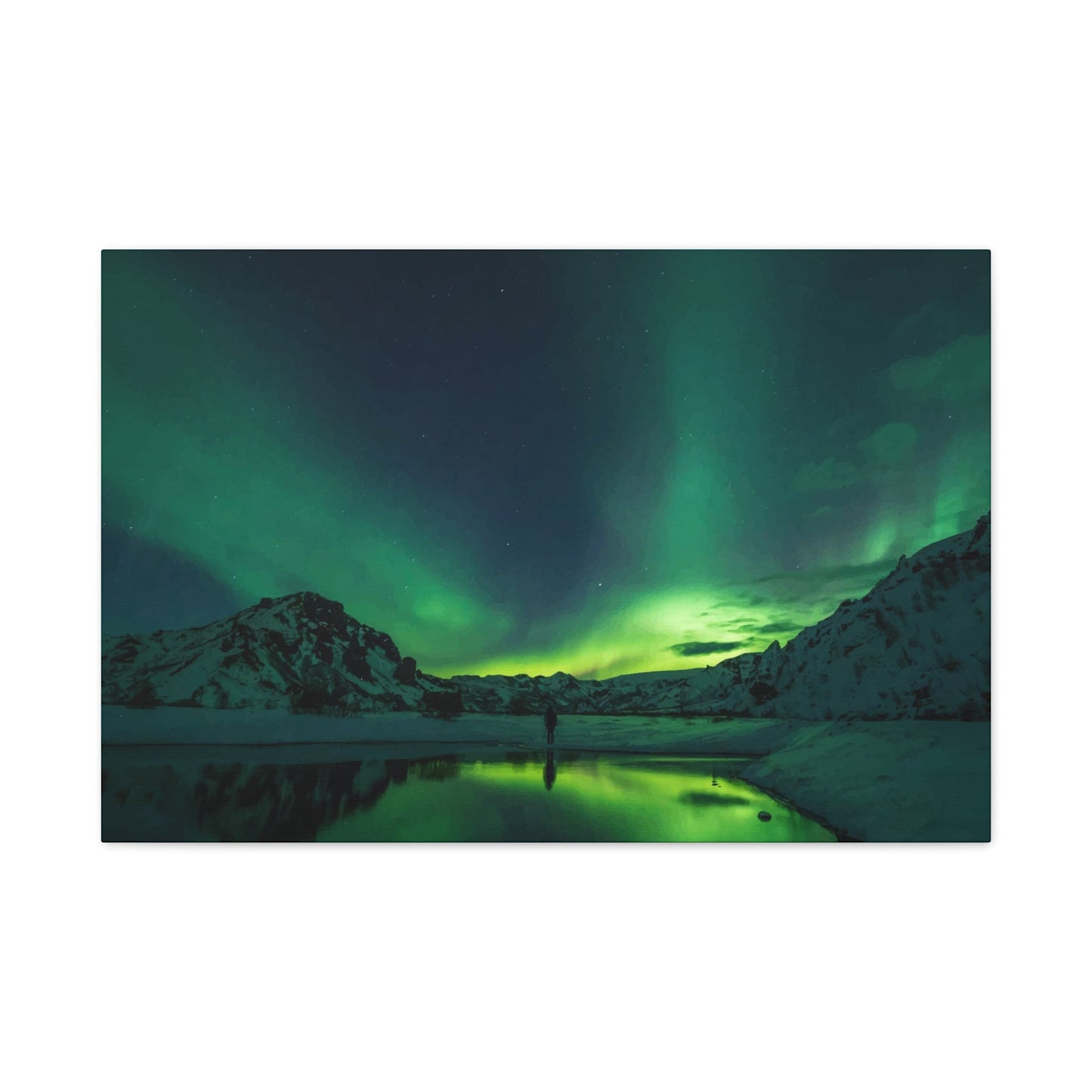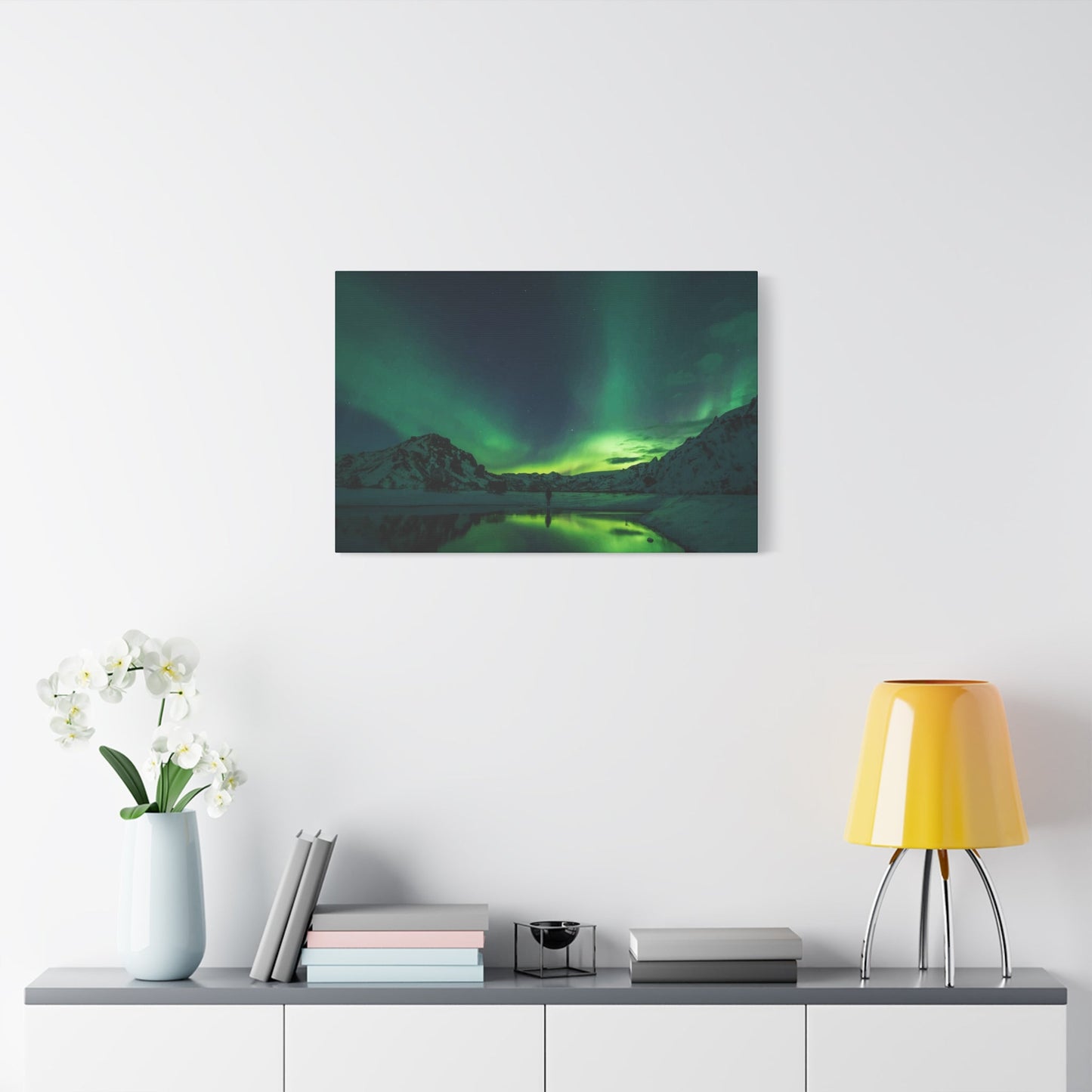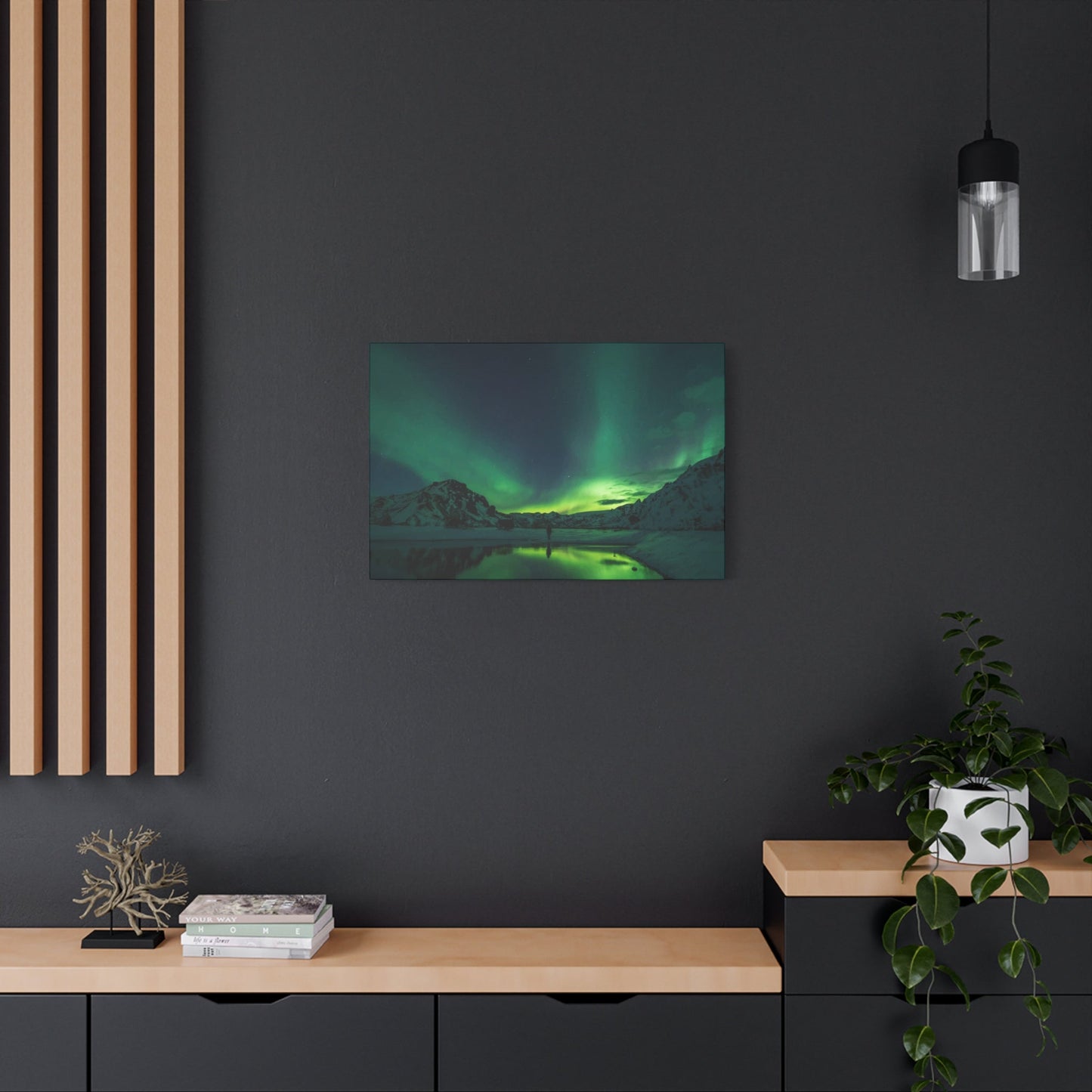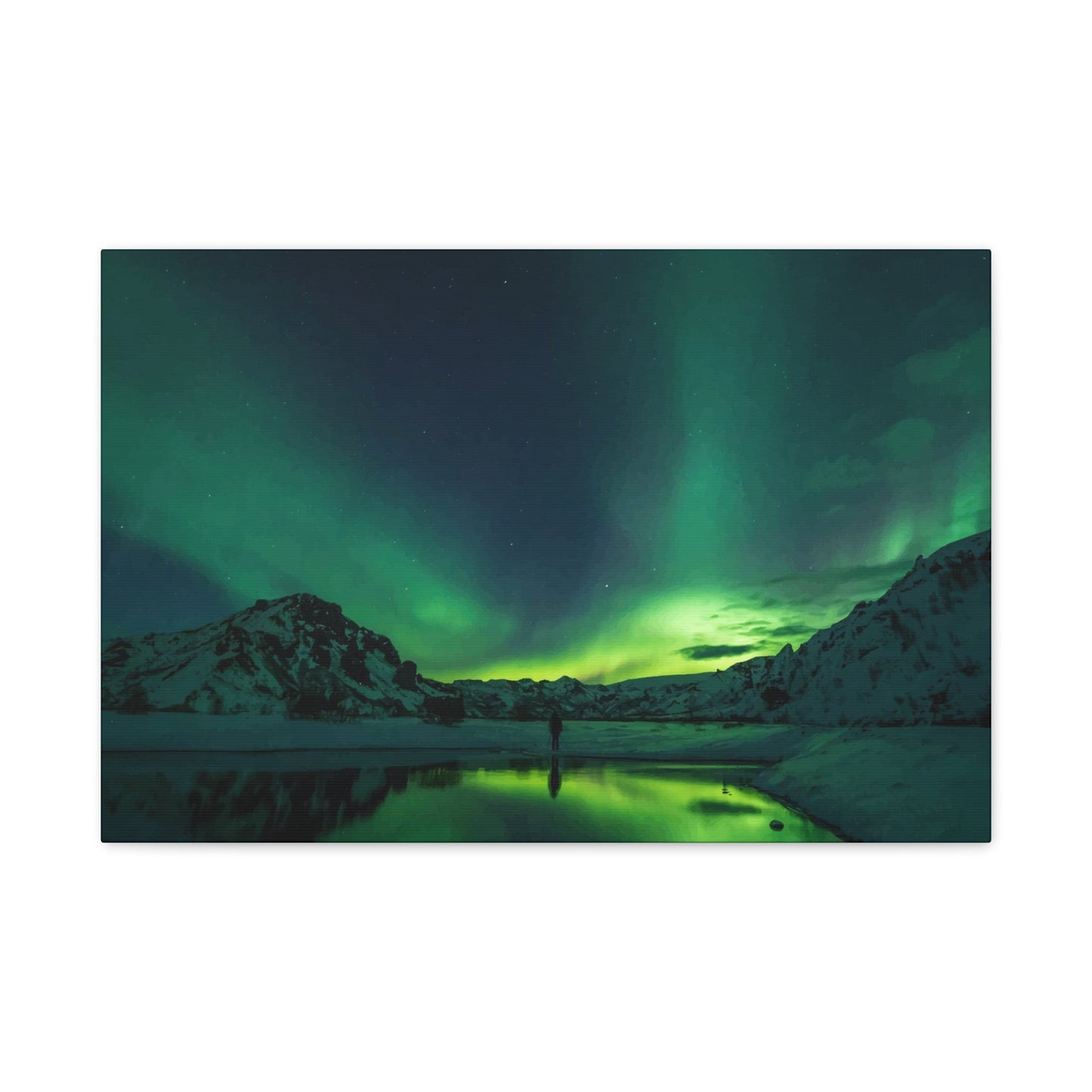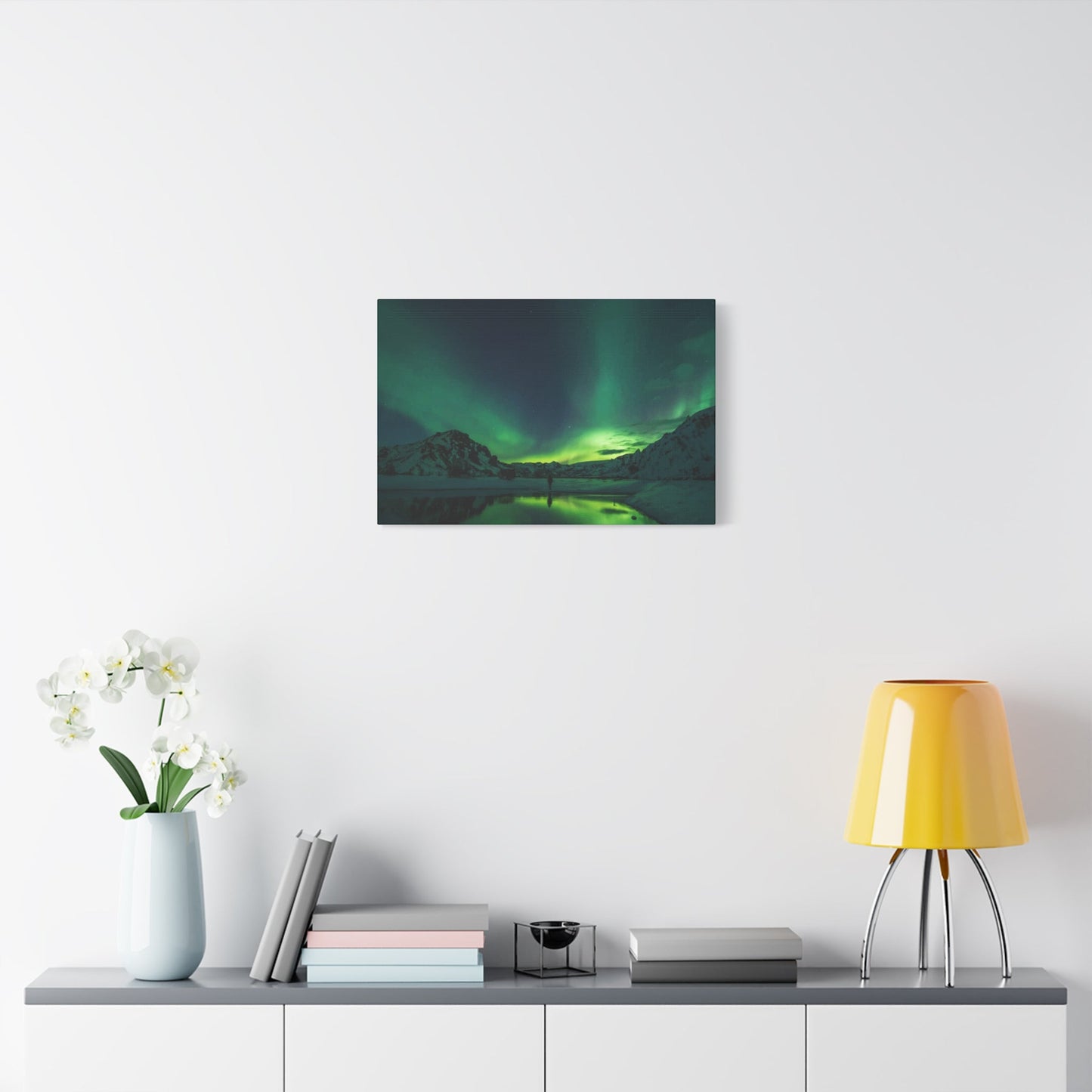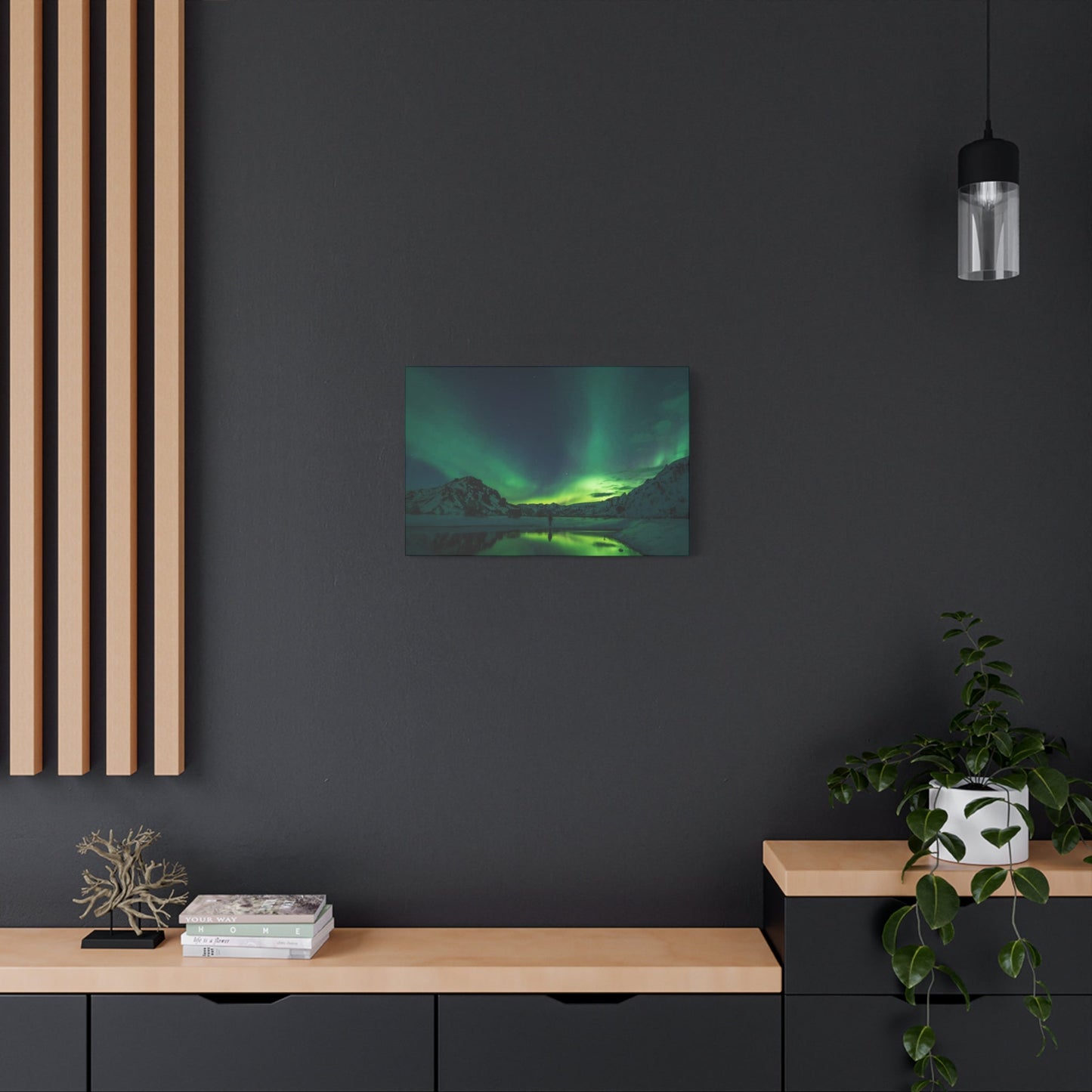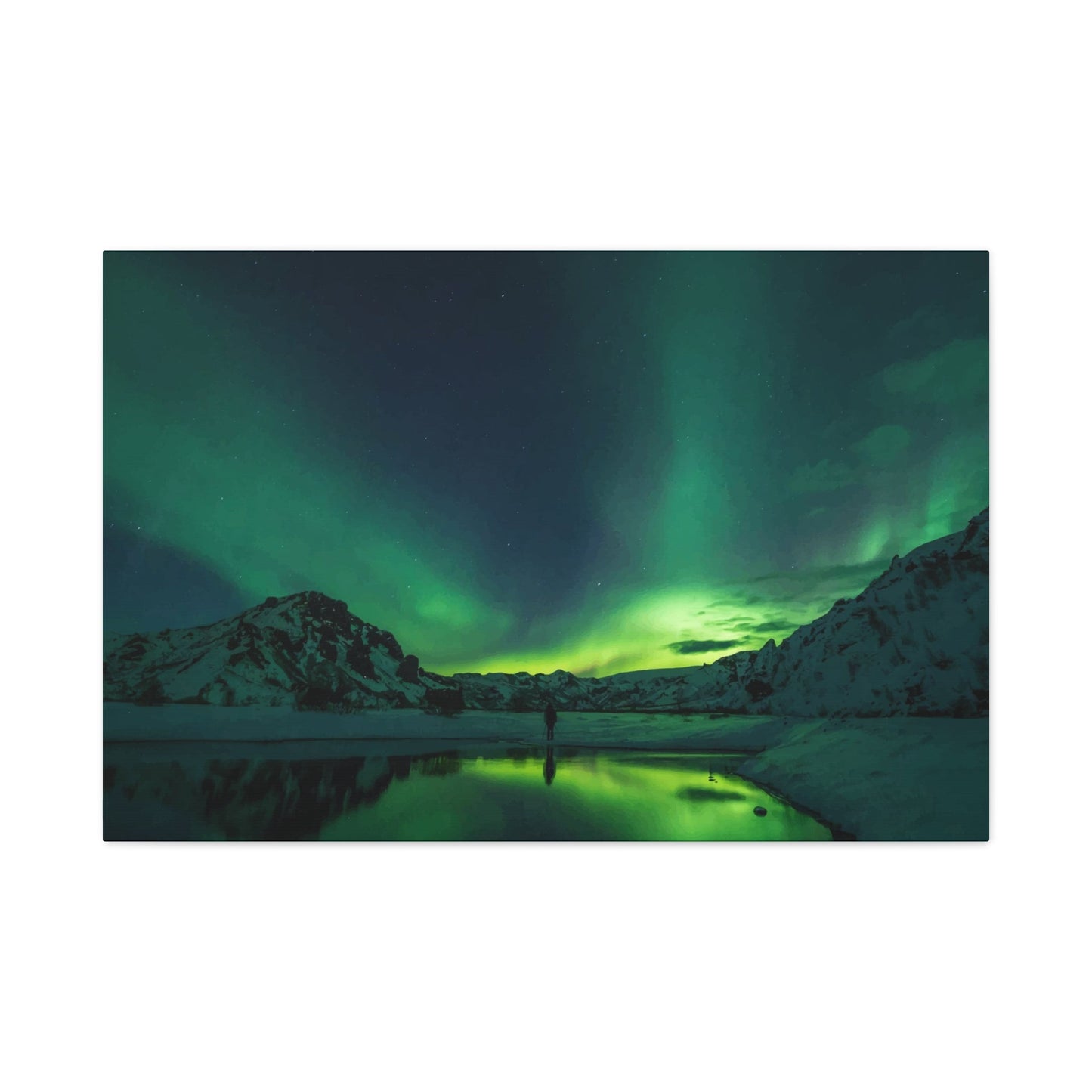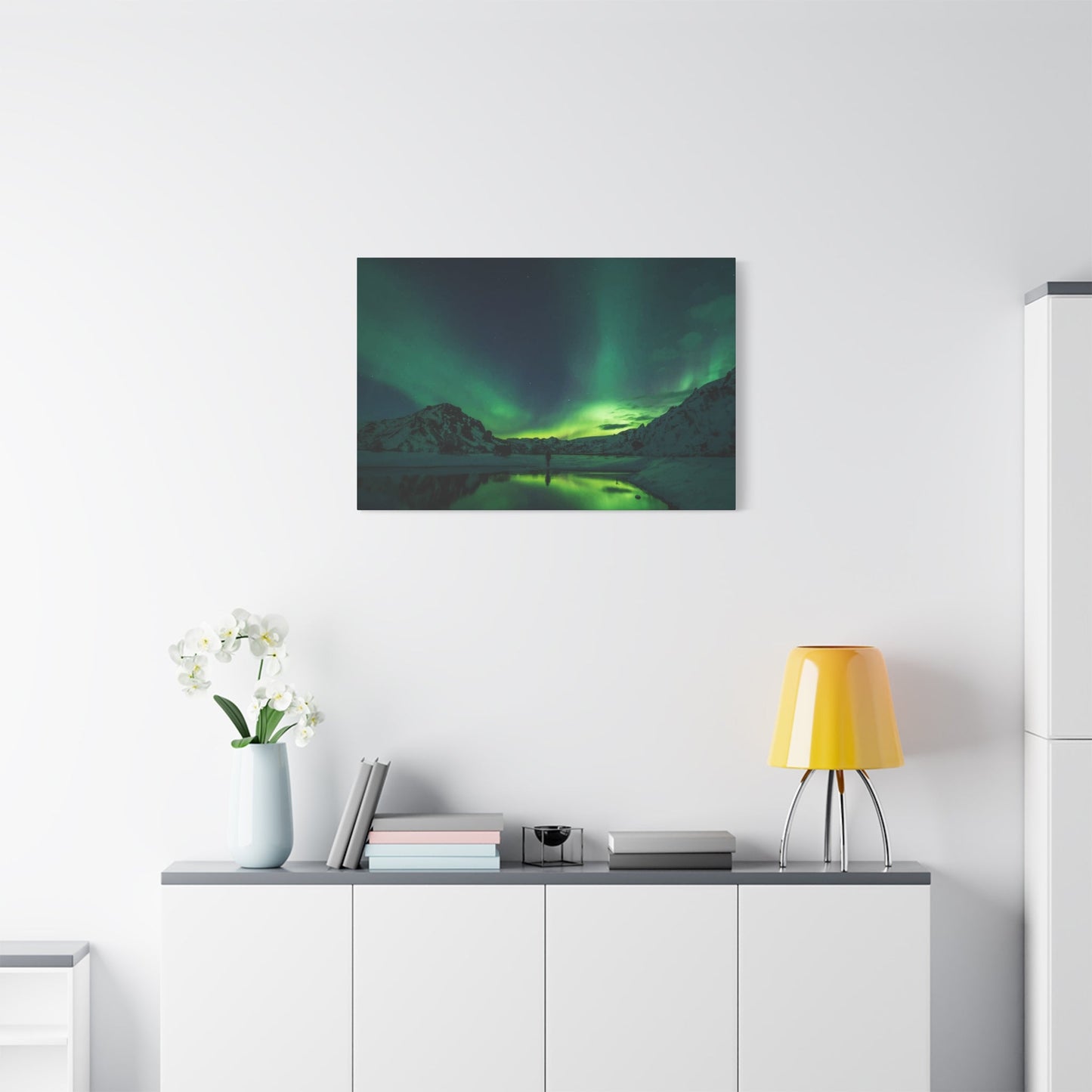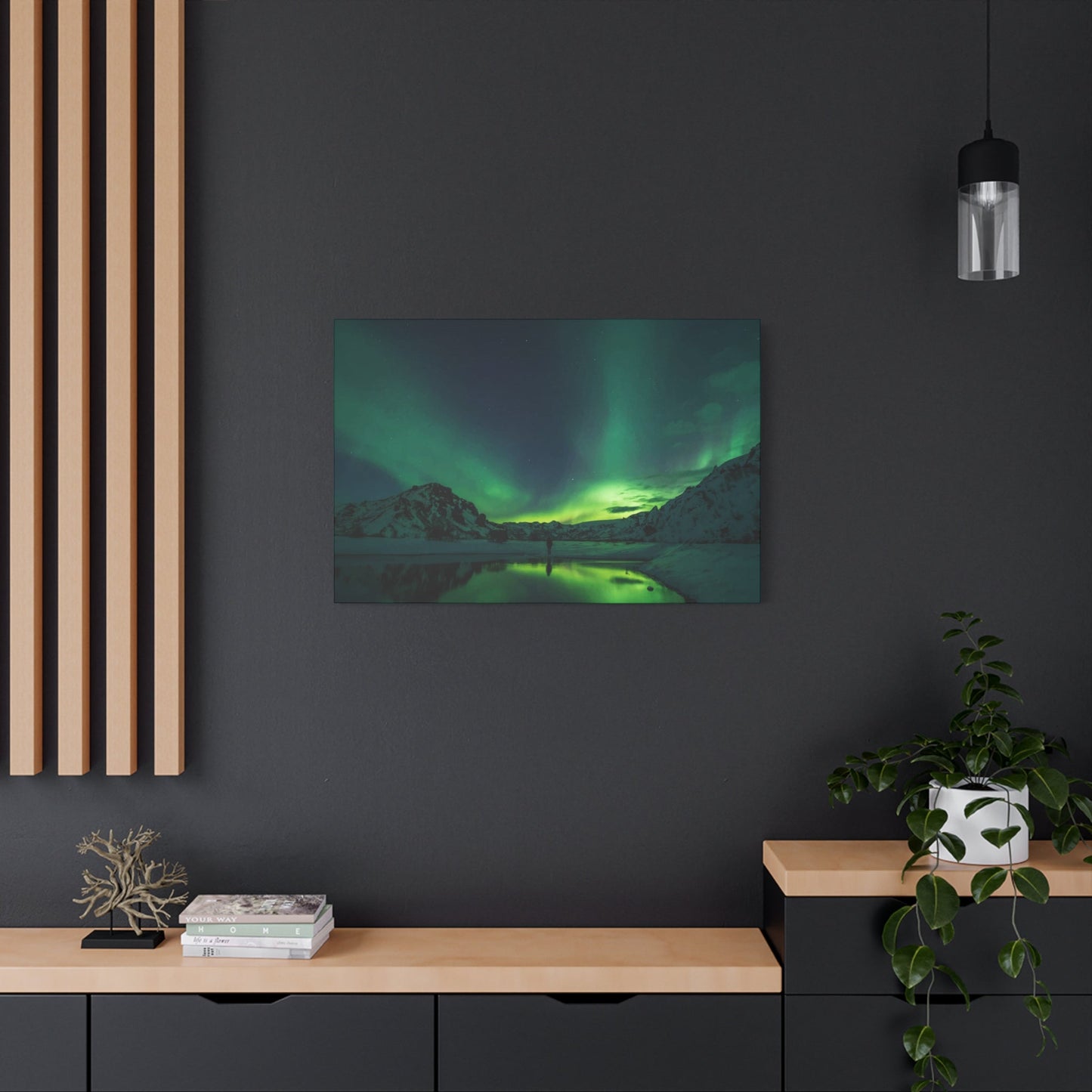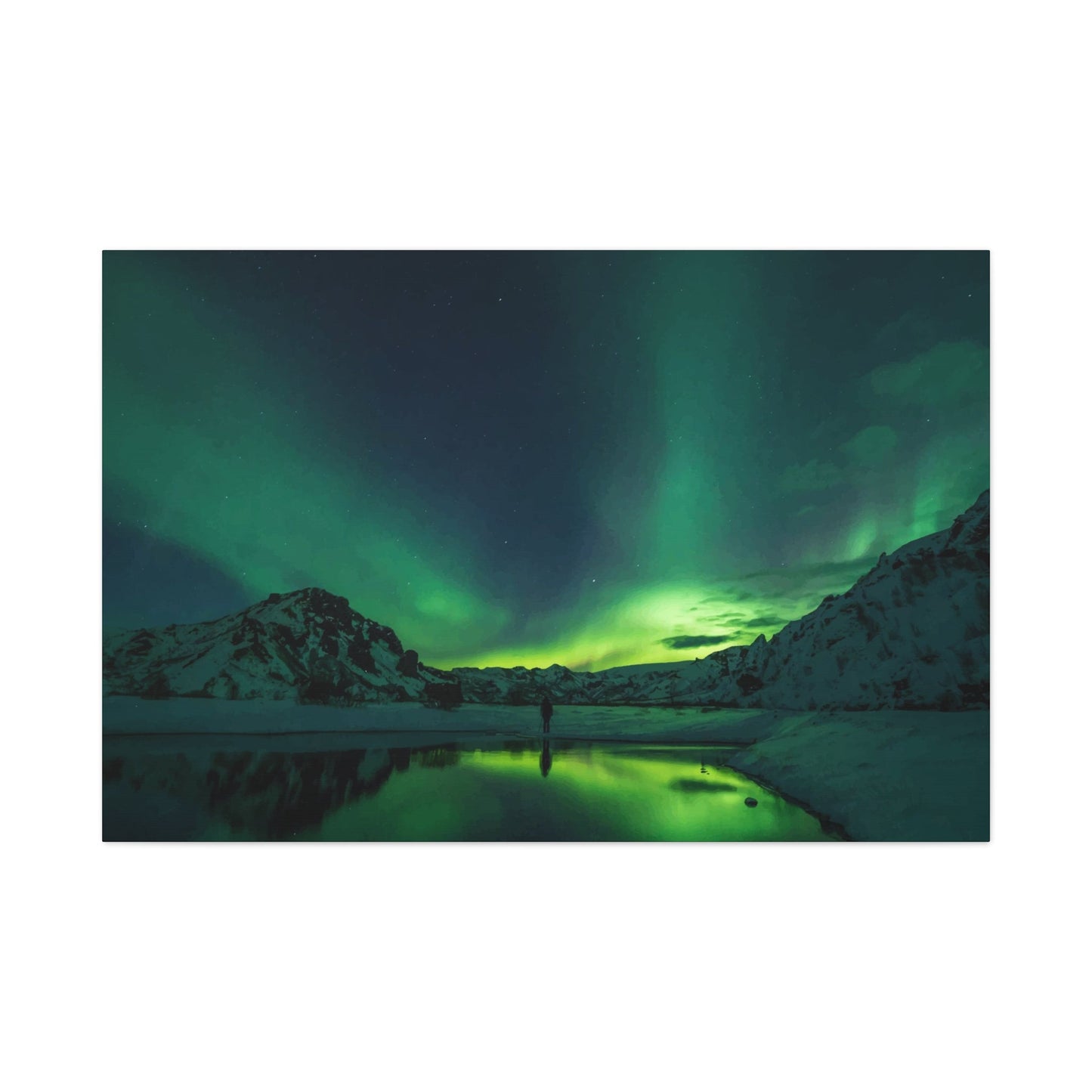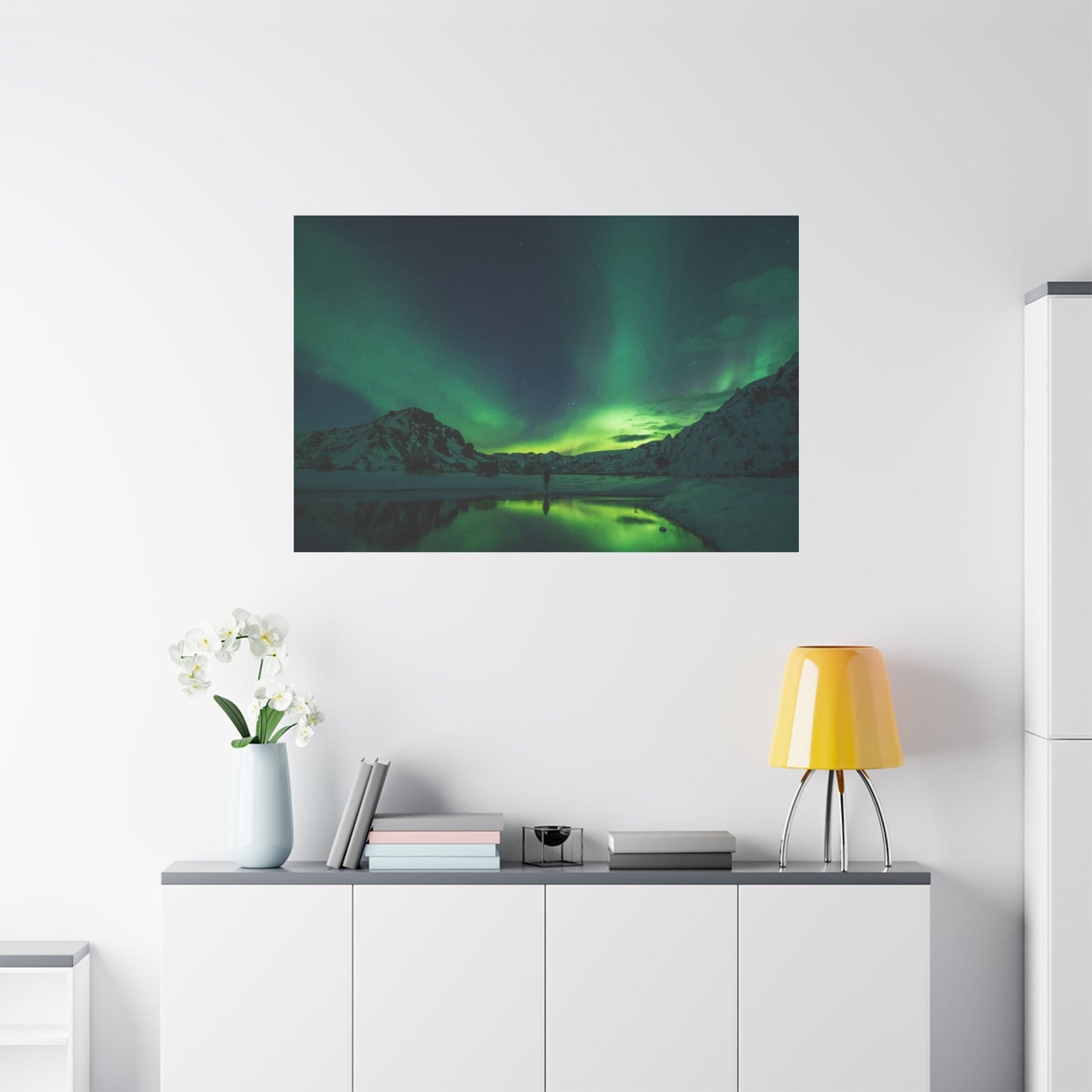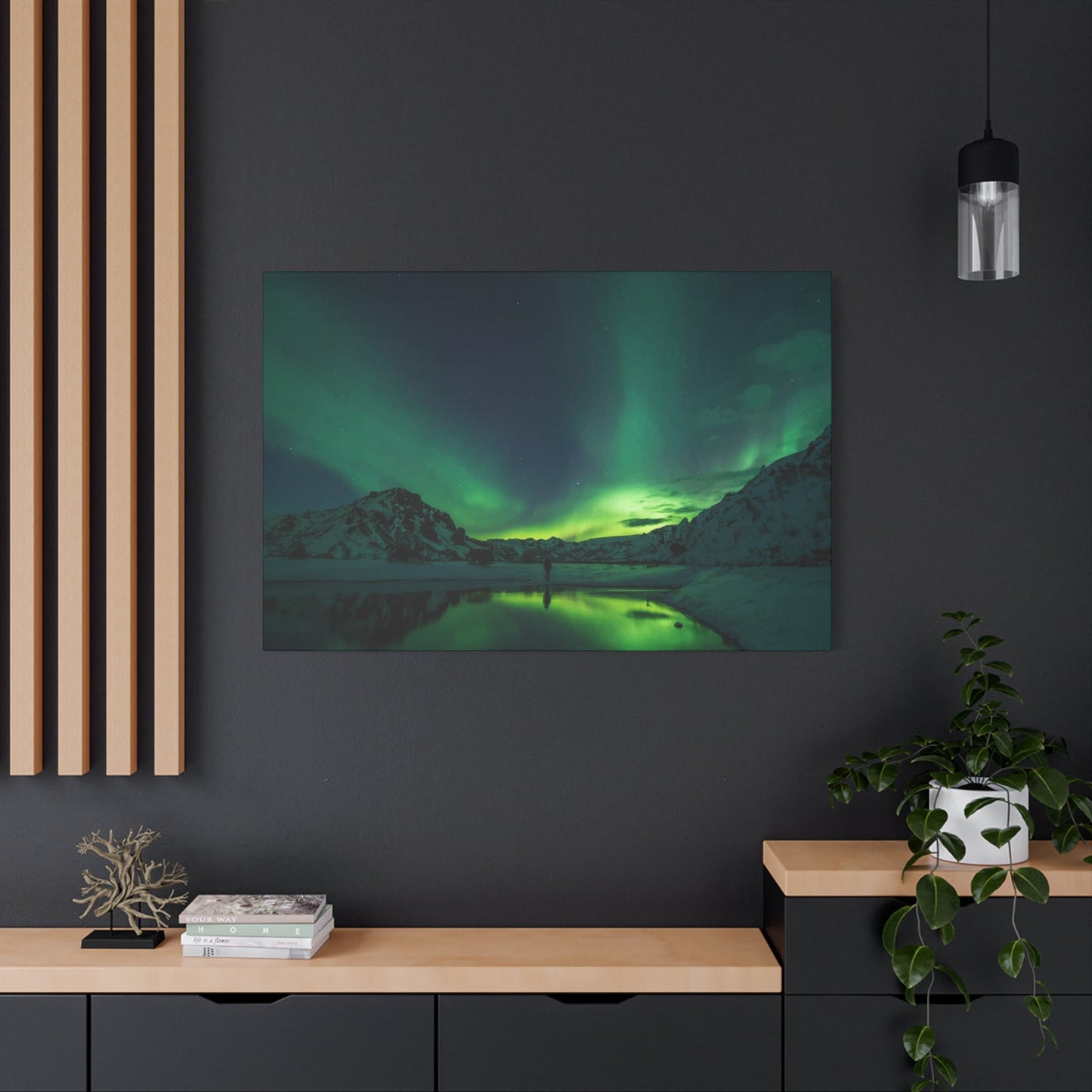Mesmerizing Northern Lights Wall Art: Creating Enchanting Aurora Displays
The ethereal beauty of the aurora borealis, or Northern Lights, has captivated humanity for centuries, inspiring countless artists, photographers, and dreamers to capture its mystical essence. This awe-inspiring natural phenomenon, characterized by vibrant waves of green, pink, purple, and blue dancing across the dark night sky, is unlike any other light show on Earth. Northern Lights wall art brings this celestial marvel directly into your home, transforming ordinary rooms into extraordinary sanctuaries filled with natural wonder and cosmic allure.
There is something deeply magnetic about aurora-themed artwork. Beyond its visual spectacle, it taps into our collective fascination with the universe’s mysteries, evoking profound emotional responses—wonder, peace, and even a sense of spiritual connection. The swirling ribbons of color invite viewers to pause and reflect, reminding us of the incredible forces that shape our planet and the cosmos beyond. Incorporating Northern Lights wall art into your living space creates an atmosphere that is both tranquil and mysterious, a subtle yet powerful celebration of nature’s grandeur.
The versatility of Northern Lights art is one of its greatest strengths. Whether you are drawn to highly detailed photographic prints that capture the aurora’s vivid realism in remote arctic landscapes, or prefer abstract paintings that express the energy and fluidity of the lights through bold brushstrokes and vibrant colors, there is a style to suit every aesthetic. Digital recreations and mixed media pieces offer modern, imaginative takes on the aurora’s glow, often incorporating luminous elements that enhance the artwork’s immersive quality.
No matter the medium or style, Northern Lights wall art provides an evocative focal point that elevates your space. It serves not just as decoration, but as a window into the extraordinary—a constant reminder of the awe-inspiring beauty and power of our natural world. By bringing the magic of the Arctic skies indoors, this art form transforms your environment into a serene retreat where the mysteries of the cosmos seem just within reach.
The Allure of the Northern Lights in Art
The Northern Lights have fascinated artists for generations, captivating not only because of their vivid and striking colors but also due to their fluid, almost intangible movement across the night sky. This mesmerizing natural light show feels alive—a cosmic dance of swirling ribbons and waves of light that seem to pulse with a rhythm all their own. Such dynamic beauty makes the aurora an ideal subject for visual interpretation, inspiring artists to capture its ephemeral magic across a broad spectrum of mediums and styles. From the sharp realism of photographic prints that freeze fleeting moments in time to abstract paintings that evoke the lights’ undulating energy through sweeping brushstrokes and vibrant hues, creatives have continuously sought ways to bottle this elusive spectacle and bring its wonder into tangible form.
At the heart of aurora-inspired art lies a unique artistic challenge: how to translate light and motion—elements defined by their constant flux—into a static, two-dimensional image. The Northern Lights are not simply a fixed palette of colors but a symphony of shifting hues, varying intensities, and subtle gradients that change by the second, transforming the night sky into a living canvas. This complexity invites artists to embrace experimentation and innovation, exploring diverse techniques to evoke the aurora’s essence. Painters often use layered glazing to build depth and luminosity, mimicking the layered light patterns of the aurora. Photographers employ long-exposure techniques to capture the trails and fluid motion of the lights, while digital artists manipulate color and light effects to create surreal, glowing compositions. Some even push the boundaries further with illuminated prints, embedding LED backlighting or phosphorescent materials to recreate the aurora’s natural glow and immersive presence.
Beyond the purely aesthetic appeal, Northern Lights art resonates on a deeper level by tapping into universal themes such as mystery, the raw power of nature, and the infinite vastness of the cosmos. It invites viewers to contemplate their place in the universe, evoking awe, introspection, and a profound sense of wonder. In this way, aurora-inspired art transcends decorative function—becoming a compelling focal point that encourages reflection and connects us to the breathtaking natural forces that surround us.
Incorporating Northern Lights Art Into Your Space
Incorporating Northern Lights art into your living or working space offers a unique opportunity to infuse your environment with a sense of wonder and tranquility. When selecting aurora-inspired pieces, consider the size and placement carefully—large-scale artworks work beautifully as focal points in living rooms, bedrooms, or offices, where their vibrant colors and dynamic forms can captivate attention and set a calming mood. Positioning the artwork against neutral or dark-toned walls can enhance the luminous quality of the piece, allowing the ethereal greens, purples, and blues to truly pop. Complementary décor in soft, muted hues or metallic accents can further amplify the cosmic ambiance.
Lighting plays a crucial role in showcasing Northern Lights art; soft, adjustable lighting or strategically placed spotlights can mimic the subtle glow of the aurora and create an immersive atmosphere. For artworks that incorporate LED or phosphorescent elements, experimenting with ambient light levels helps reveal their full enchanting effect. Finally, to build a cohesive aesthetic, consider pairing Northern Lights pieces with other celestial-themed décor or natural elements like wood and stone textures, creating a serene sanctuary that echoes the quiet majesty of the night sky. By thoughtfully integrating Northern Lights art into your space, you create not just a decorative feature, but a daily invitation to pause, reflect, and connect with the beauty of the cosmos.
Styles and Mediums: From Realism to Abstraction
Northern Lights wall art comes in a wide range of styles to suit diverse tastes and interiors:
-
Photographic Prints: One of the most popular mediums, high-quality photographs capture the aurora in breathtaking detail, often shot in remote northern locations like Norway, Iceland, or Canada. These prints bring an authentic slice of the night sky indoors, perfect for those who appreciate realism and nature photography.
-
Abstract Paintings: Some artists choose to interpret the Northern Lights through abstraction, focusing on the fluid forms, colors, and movement rather than literal representation. These paintings use bold brushstrokes, vibrant palettes, and dynamic compositions to evoke the lights’ essence, allowing viewers to feel the energy and rhythm rather than see a fixed scene.
-
Digital Art and Mixed Media: The rise of digital art has opened new possibilities for aurora-themed creations. Artists use digital brushes, layering, and effects to create glowing, surreal representations that can be printed on canvas or metal. Mixed media artworks might combine painting, photography, and light installations to enhance the immersive experience.
-
Illuminated Wall Art: For a truly enchanting display, some artists incorporate LED backlighting or phosphorescent materials into their work. These illuminated pieces can simulate the aurora’s natural glow, changing the room’s ambiance and creating an almost hypnotic effect that evolves with the lighting conditions.
Stunning Northern Lights Wall Art Ideas
Creating breathtaking displays with aurora-themed artwork requires careful consideration of composition, color harmony, and emotional impact. The most compelling northern lights wall art captures the dynamic movement and ethereal quality that makes these celestial displays so mesmerizing. Large-scale panoramic pieces work exceptionally well as focal points, allowing viewers to feel immersed in the cosmic dance of colors sweeping across starlit horizons.
Consider incorporating multiple pieces of varying sizes to create gallery walls that tell a story of the aurora's journey through the night sky. Triptych arrangements showcase the progressive movement of light bands, while circular or curved compositions mirror the natural flow of magnetic fields that create these phenomena. Mixed media approaches combining photography with painted elements add depth and artistic interpretation to realistic representations.
Layering different artistic styles creates visual interest and prevents monotony. Combine photorealistic images with abstract interpretations, or pair detailed close-up views of aurora formations with wide-angle landscape scenes. The contrast between different artistic approaches keeps viewers engaged while maintaining thematic coherence throughout your display.
Three-dimensional elements enhance the immersive quality of aurora displays. Shadow boxes containing layered transparent materials create depth and movement, while backlit panels simulate the actual glow of northern lights. LED integration transforms static artwork into dynamic displays that change throughout the day, mimicking the natural behavior of aurora phenomena.
Color progression plays a crucial role in creating compelling arrangements. Organize pieces to flow from deep purples and blues through vibrant greens to subtle pinks and yellows, following the natural spectrum often observed in aurora displays. This creates visual rhythm and guides the eye through your composition naturally.
Seasonal rotation keeps your aurora collection fresh and engaging. Display cooler, more intense pieces during winter months to complement the season when northern lights are most visible, then transition to warmer, more ethereal interpretations during summer. This approach maintains year-round interest while honoring the natural cycles associated with aurora phenomena.
Interactive elements engage viewers on multiple levels. Motion sensors can trigger lighting changes, while sound components add atmospheric audio of wind through arctic landscapes. These multi-sensory approaches transform passive viewing into immersive experiences that transport viewers to the remote locations where aurora displays occur naturally.
How to Pick Northern Lights Prints
Selecting the perfect northern lights prints requires understanding both technical quality factors and aesthetic considerations that align with your personal vision. Print quality significantly impacts the final appearance of aurora imagery, as these celestial phenomena depend heavily on subtle color gradations and luminous effects that inferior printing processes cannot accurately reproduce.
Paper selection influences both longevity and visual impact. High-quality archival papers preserve color accuracy over time while preventing fading that could diminish the ethereal quality of aurora displays. Metallic papers enhance the luminous quality of northern lights imagery, creating reflective surfaces that simulate the actual glow of these celestial phenomena. Canvas prints offer texture that adds artistic interpretation to photographic images.
Color accuracy becomes paramount when dealing with aurora imagery, as the subtle interplay of different hues creates the magical quality these displays are known for. Professional-grade printing processes maintain the delicate balance between cool blues and purples of the night sky with the vibrant greens and occasional reds of the aurora bands themselves.
Size considerations affect both impact and placement flexibility. Large prints create immersive experiences but require adequate viewing distance and wall capacity. Medium-sized pieces offer versatility in placement while maintaining visual presence. Small prints work well in intimate settings or as parts of larger gallery arrangements.
Artist reputation and authenticity matter when investing in northern lights artwork. Established photographers who specialize in aurora imagery bring technical expertise and artistic vision that elevates simple documentation into compelling art. Research the artist's background, their experience in aurora photography, and their commitment to accurate color representation.
Limited edition prints offer exclusivity and potential investment value. Numbered editions with certificates of authenticity provide assurance of quality while limiting availability. However, open edition prints from reputable sources can offer excellent quality at more accessible price points.
Technical specifications reveal print quality before purchase. Resolution, color gamut coverage, and printing method all influence final results. Giclée printing on archival materials represents the gold standard for fine art reproduction, ensuring color accuracy and longevity that matches museum-quality standards.
Framing readiness affects total investment and installation timeline. Prints sold with appropriate matting and backing save time and ensure proper presentation. However, purchasing unframed prints allows greater flexibility in selecting frames that complement your existing décor while potentially reducing overall costs.
Famous Northern Lights Artists
The artistic interpretation of aurora borealis has attracted talented creators throughout history, each bringing unique perspectives and techniques to capture the essence of these celestial phenomena. Contemporary photographers have elevated aurora documentation beyond simple recording into the realm of fine art, combining technical mastery with artistic vision to create compelling imagery.
Marc Adamus stands among the most recognized contemporary aurora photographers, bringing dramatic compositions and meticulous post-processing techniques that enhance the natural beauty of northern lights displays. His work demonstrates how technical excellence combined with artistic vision creates images that transcend documentary photography to become compelling art pieces suitable for sophisticated home collections.
Babak Tafreshi approaches aurora photography with scientific accuracy while maintaining artistic sensibility. His background in astronomy informs compositions that accurately represent celestial relationships while creating visually striking images. The combination of scientific knowledge and artistic skill results in prints that educate while they inspire.
Ole Christian Salomonsen brings Scandinavian perspectives to aurora art, capturing the phenomena in its native Arctic environment. His intimate knowledge of northern lights behavior and optimal viewing conditions results in authentic imagery that conveys the true character of these natural displays. The cultural context of his work adds depth beyond simple visual appeal.
Jennifer Wu combines traditional landscape photography skills with specialized aurora techniques, creating prints that showcase both the celestial phenomena and the terrestrial environments where they occur. Her work demonstrates how northern lights enhance rather than dominate landscape compositions, creating balanced imagery suitable for various decorative contexts.
Historical artists also deserve recognition for their contributions to aurora art. Frederic Edwin Church's paintings from the 19th century captured aurora displays with remarkable accuracy despite the limitations of observing and recording these phenomena before modern technology. These historical works offer timeless interpretations that complement contemporary photography.
International perspectives enrich aurora art collections. Artists from different northern regions bring cultural interpretations and local knowledge that varies the treatment of similar phenomena. Norwegian artists might emphasize the relationship between aurora and fjord landscapes, while Alaskan artists focus on the vast wilderness contexts where northern lights appear.
Digital artists represent a growing category of aurora creators, using technology to interpret and enhance natural phenomena. While maintaining connection to observable reality, digital manipulation allows artistic expression that pure photography cannot achieve. These works bridge natural documentation and creative interpretation.
Collaborative projects between scientists and artists produce aurora art that combines accuracy with aesthetic appeal. These partnerships ensure scientific validity while maintaining artistic vision, resulting in works that satisfy both educational and decorative purposes. Such collaborations represent the future of aurora art development.
Easy DIY Northern Lights Wall Art
Creating your own aurora-inspired artwork offers personal satisfaction while allowing complete customization to match your specific vision and décor requirements. DIY northern lights wall art projects range from simple techniques suitable for beginners to complex mixed-media installations that challenge experienced creators. The key lies in understanding the basic visual elements that make aurora displays recognizable and emotionally compelling.
Watercolor techniques excel at capturing the fluid, ethereal quality of northern lights. Begin with high-quality watercolor paper and professional-grade paints in aurora colors: Prussian blue, ultramarine, viridian green, and touches of magenta or yellow. Wet-on-wet techniques create the soft, blended effects characteristic of aurora bands, while salt sprinkling during drying adds texture that mimics star fields.
Layer building creates depth and luminosity essential to convincing aurora representations. Start with dark sky backgrounds using deep blues and purples, then gradually build lighter aurora bands using successive washes of green and occasional warmer tones. Masking fluid preserves star areas while allowing free application of sky colors. Remove masking after completion to reveal crisp star points.
Acrylic painting offers more control and opacity than watercolors while still allowing blending effects. Use fluid acrylics thinned with mediums for smooth gradations, and apply aurora bands using horizontal brush strokes that follow natural aurora formations. Glazing techniques build luminosity through transparent color layers that simulate the actual light emission of aurora phenomena.
Mixed media approaches combine different materials for enhanced visual impact. Combine painted backgrounds with applied materials like metallic leaf, glitter, or phosphorescent paint that glows under UV light. Transparent overlays create depth while textural elements add tactile interest that pure painting cannot achieve.
Digital creation opens unlimited possibilities for aurora art. Photography editing software allows manipulation of existing aurora photographs or creation of entirely digital interpretations. Layer blending modes simulate light emission effects while gradient tools create smooth color transitions. Digital techniques also enable easy resizing and format changes for different display requirements.
Stencil techniques simplify aurora creation for those less comfortable with freehand painting. Create aurora band stencils using flexible materials, then apply paint through spray bottles or sponges for soft, diffused effects. Multiple stencils layered at different angles create complex aurora formations without requiring advanced painting skills.
Photography enhancement transforms personal aurora photographs into professional-quality prints. Basic editing software can enhance color saturation, adjust contrast, and remove unwanted elements while maintaining the authentic character of original images. Learn basic color correction and noise reduction techniques to maximize the potential of amateur aurora photography.
Canvas alternatives expand creative possibilities. Wood panels provide smooth surfaces ideal for detailed work, while fabric surfaces add texture. Unusual materials like metal or glass create unique effects when combined with appropriate paint systems. Experiment with different substrates to discover unexpected aesthetic possibilities.
Calm Vibes with Northern Lights Decor
Northern lights décor creates tranquil environments that promote relaxation and contemplation through the gentle, flowing characteristics inherent in aurora imagery. The natural movement patterns and color palettes associated with these celestial phenomena align perfectly with principles of calming environmental design, making aurora-themed artwork ideal for bedrooms, meditation areas, and other retreats from daily stress.
Color psychology explains why northern lights imagery produces calming effects. The predominant blues and greens found in aurora displays naturally lower heart rate and blood pressure while promoting feelings of serenity and connection to nature. These physiological responses occur unconsciously, making aurora artwork effective for stress reduction without requiring active engagement or awareness.
Placement strategies maximize calming benefits of aurora artwork. Position pieces where they'll be viewed during relaxation activities: above beds, facing meditation cushions, or visible from comfortable seating areas. Avoid placing stimulating aurora imagery in areas designated for active tasks, as the mesmerizing qualities can become distracting rather than supportive.
Lighting integration enhances the calming properties of northern lights décor. Soft, indirect lighting that doesn't compete with artwork allows aurora colors to appear naturally luminous. Dimmable systems enable adjustment throughout the day, maintaining calm atmospheres while accommodating different activities and moods. Consider color-changing LED systems that can echo aurora colors during evening hours.
Scale considerations affect psychological impact. Large-scale aurora artwork creates immersive experiences that transport viewers mentally to peaceful Arctic environments, while smaller pieces provide gentle focal points that don't overwhelm intimate settings. Match artwork scale to room proportions and intended psychological effects.
Grouping principles organize multiple aurora pieces for maximum calming impact. Arrange artworks to create visual flow that guides attention gently rather than demanding focus. Overlapping themes and color relationships unify collections while providing enough variety to maintain interest during extended viewing.
Complementary elements support the calming atmosphere created by aurora artwork. Natural materials like wood frames connect indoor environments to the wilderness settings where northern lights occur naturally. Soft textiles in coordinating colors extend aurora palettes throughout room design. Live plants add organic elements that reinforce connections to nature.
Seasonal adaptations maintain year-round calming benefits. Lighter, more ethereal aurora interpretations suit summer months when natural aurora activity decreases, while more intense, dramatic pieces complement winter's longer nights and increased aurora visibility. This rotation prevents habituation while honoring natural cycles.
Soundscapes complement visual aurora elements for enhanced relaxation. Gentle sounds of Arctic wind, distant wildlife, or subtle electronic ambient music specifically designed for aurora imagery create multi-sensory experiences. Ensure audio elements remain subtle enough to support rather than dominate the visual calm created by artwork.
Personal meditation practices benefit from aurora-focused environments. The natural movement patterns in aurora imagery provide gentle focal points for breathing exercises and mindfulness practices. The cosmic scale implied by aurora phenomena encourages perspective shifts that reduce stress and promote emotional balance.
Science Behind Northern Lights Art
Understanding the scientific mechanisms that create northern lights enhances appreciation for aurora artwork while informing artistic interpretation of these complex natural phenomena. The interaction between solar wind particles and Earth's magnetic field creates the visual spectacle that artists strive to capture, and knowledge of these processes helps viewers recognize accuracy and artistic interpretation in aurora representations.
Solar wind composition directly influences aurora characteristics that artists must consider for accurate representation. High-energy electrons and protons streaming from the sun interact with atmospheric gases at specific altitudes, creating the characteristic colors and formations that define northern lights displays. Oxygen interactions produce the familiar green aurora bands most commonly depicted in artwork, while nitrogen creates blue and purple hues at lower altitudes.
Magnetic field dynamics shape aurora formations in ways that artists can incorporate into their compositions. The funnel-like structure of Earth's magnetic field concentrates solar particles toward polar regions, creating the distinctive curved and flowing patterns that make aurora displays so visually compelling. Understanding these natural flow patterns helps artists create convincing aurora representations that feel authentic rather than arbitrary.
Altitude relationships affect color distribution in ways that enhance artistic accuracy. Green aurora typically occurs between 100-300 kilometers above Earth's surface, while red aurora forms at higher altitudes where oxygen density decreases. Blue and purple colors appear at lower altitudes where nitrogen interactions dominate. Artists who understand these relationships can create layered compositions that reflect natural aurora structure.
Temporal variations influence artistic interpretation of aurora phenomena. Northern lights displays change constantly throughout the night, from initial subtle glows to dramatic dancing curtains and finally fading whispers at dawn. Sequential artwork series can capture this temporal progression, creating gallery installations that tell the complete story of aurora development.
Geographic factors affect aurora visibility and characteristics that artists might incorporate. Auroral ovals shift with magnetic activity levels, while local weather patterns influence visibility. Latitude determines viewing angles and seasonal variations, information that helps artists create geographically accurate representations suitable for specific audiences.
Camera limitations versus human perception create interesting artistic considerations. Long-exposure photography captures aurora details invisible to naked eyes while potentially misrepresenting colors and movement patterns. Artists must decide whether to represent aurora as cameras record them or as human observers experience them, choices that significantly impact artistic interpretation.
Predictive modeling helps artists understand aurora behavior for planning purposes. Space weather forecasting services provide advance notice of potential aurora activity, enabling photographers to position themselves optimally for documentation. Artists working from personal experience can use this knowledge to plan aurora observation expeditions that inform their creative work.
Light pollution effects influence aurora visibility and artistic representation. Urban light pollution significantly reduces aurora visibility, making wilderness locations essential for accurate observation and documentation. Artists might choose to represent aurora as they appear in pristine environments or acknowledge light pollution effects in their work.
Climate change implications add contemporary relevance to aurora art. Changing atmospheric conditions and magnetic field variations potentially affect future aurora characteristics. Artists can contribute to documentation of current aurora phenomena while creating work that raises awareness of environmental factors affecting these natural displays.
Northern Lights in Modern Homes
Incorporating northern lights artwork into contemporary living environments requires understanding current design trends while respecting the timeless appeal of aurora phenomena. Modern homes often emphasize clean lines, minimal clutter, and carefully curated focal points, creating ideal contexts for impactful aurora displays that serve both aesthetic and emotional functions.
Minimalist approaches let aurora artwork command attention without competing elements. Single large-scale pieces work particularly well in contemporary settings where emphasis falls on quality over quantity. The natural movement and color complexity within aurora imagery provides visual interest that busy modern lifestyles appreciate without overwhelming simplified design schemes.
Technology integration enhances aurora artwork for smart home environments. Digital frames displaying rotating aurora collections adapt to changing moods and seasons. Programmable lighting systems can echo aurora colors throughout rooms, extending the artwork's influence beyond frame boundaries. Voice-activated controls enable easy adjustment of both digital displays and supporting lighting elements.
Open floor plans common in modern homes create opportunities for aurora artwork to serve multiple functional areas simultaneously. Large installations visible from kitchen, dining, and living areas unify separate functional zones while providing consistent calming influences throughout the home. Consider sight lines from different areas when selecting placement locations.
Contemporary framing options suit modern aesthetic preferences while protecting aurora artwork investments. Sleek metal frames complement industrial design elements common in modern homes. Frameless mounting systems create floating effects that emphasize the ethereal quality of aurora displays. LED-integrated frames add illumination that enhances aurora colors without external lighting systems.
Color coordination integrates aurora artwork with modern design palettes. The natural blues and greens found in northern lights complement popular contemporary color schemes emphasizing neutrals with accent colors. Aurora artwork can provide the primary color interest in otherwise monochromatic environments, or complement existing color themes in more vibrant settings.
Flexible display systems accommodate changing needs common in dynamic modern lifestyles. Track mounting systems enable easy repositioning of aurora artwork for different occasions or seasonal preferences. Modular gallery systems allow expansion and reconfiguration as collections grow or living situations change.
Smart storage solutions preserve aurora artwork collections while maintaining clean modern aesthetics. Climate-controlled storage for rotation pieces prevents damage while enabling seasonal changes. Digital catalogs help manage larger collections while taking up no physical storage capacity.
Biophilic design principles support aurora artwork inclusion in modern homes. The connection to natural phenomena that aurora imagery provides satisfies human needs for nature connection that urban modern living often lacks. This psychological benefit adds functional value beyond pure aesthetic considerations.
Sustainable approaches align aurora artwork with modern environmental consciousness. Digital displays eliminate physical production environmental impacts while offering unlimited variety. Locally-sourced artwork reduces transportation environmental costs. Archival quality physical prints ensure longevity that reduces replacement needs.
Best Frames for Northern Lights Art
Selecting appropriate frames for aurora artwork requires balancing protection, presentation, and aesthetic integration considerations that vary depending on artwork characteristics and display environments. The ethereal nature of northern lights imagery demands framing solutions that enhance rather than compete with the natural beauty of aurora phenomena while providing long-term preservation for valuable art investments.
Material selection significantly impacts both appearance and longevity of aurora artwork displays. Metal frames offer clean lines and durability that suit modern environments while providing excellent protection against warping and environmental damage. Aluminum frames resist corrosion while remaining lightweight, making them ideal for larger aurora prints that might strain wall mounting systems with heavier frame materials.
Wood frames provide warmth that can complement the natural phenomena depicted in aurora artwork. Choose woods that echo the wilderness environments where northern lights occur naturally: pine, birch, or other northern species create thematic connections. Avoid ornate wood frames that might compete with the flowing, organic patterns characteristic of aurora displays.
Glass selection affects both protection and visual presentation of aurora artwork. Museum-quality UV-filtering glass prevents color fading that could diminish the vibrant hues essential to aurora imagery. Anti-reflective coatings eliminate glare that might obscure subtle color gradations. Consider acrylic alternatives for larger pieces where glass weight becomes prohibitive.
Matting considerations become crucial for preserving aurora artwork while enhancing presentation. Acid-free materials prevent chemical reactions that could damage prints over time. Mat colors should complement rather than compete with aurora colors: soft whites or subtle grays work well with most aurora imagery. Avoid colored mats that might shift color perception of the artwork itself.
Depth variations accommodate different aurora artwork styles and enhancement desires. Standard frames work well for traditional prints, while deeper shadow box frames enable inclusion of lighting elements or three-dimensional components that enhance aurora displays. Consider future enhancement possibilities when selecting frame depths initially.
Lighting integration transforms framed aurora artwork into dynamic displays. LED strips installed behind or within frames create backlighting effects that simulate the natural luminosity of aurora phenomena. Ensure any electrical modifications maintain safety standards while preserving artwork protection functions of proper framing.
Custom solutions address unique aurora artwork requirements that standard frames cannot accommodate. Panoramic aurora images might require non-standard proportions, while mixed-media pieces need accommodation for varying thicknesses or projecting elements. Work with professional framers experienced in art preservation for valuable or irreplaceable aurora artwork pieces.
Conservation framing techniques ensure long-term preservation of important aurora artwork. Acid-free backing materials, proper spacing between glass and artwork, and climate-appropriate mounting systems prevent common causes of artwork degradation. These techniques particularly matter for original aurora photography or limited edition prints with significant value.
Modular systems provide flexibility for evolving aurora artwork collections. Interchangeable components enable frame reuse as artwork changes or collections grow. Standard sizing across multiple pieces creates visual coherence in gallery installations while reducing long-term framing costs through component sharing.
Security considerations become important for valuable aurora artwork displays. Anti-theft hanging systems deter casual removal while maintaining easy access for authorized adjustments. Consider security features during initial framing rather than attempting modifications later that might compromise artwork protection.
Conclusion
Mesmerizing Northern Lights wall art offers a magical way to bring the enchanting beauty of the aurora borealis into your living space. These stunning artworks capture the swirling colors, ethereal glow, and dynamic movement of the Northern Lights, transforming ordinary walls into windows to one of nature’s most breathtaking phenomena. Whether displayed as large canvas prints, framed posters, or intricate digital designs, Northern Lights art invites viewers to experience wonder, calm, and awe every day.
One of the most captivating aspects of Northern Lights wall art is its ability to evoke a sense of mystery and natural grandeur. The vibrant greens, purples, and blues dancing across the night sky create a mesmerizing visual spectacle that appeals to both nature lovers and art enthusiasts. By incorporating this art into your home, you invite a connection to the vastness of the universe and the beauty of our planet’s natural wonders, fostering a sense of peace and inspiration.
Beyond its visual allure, Northern Lights art holds symbolic meaning related to magic, transformation, and hope. The aurora’s shifting colors and ephemeral nature remind us of life’s fleeting moments and the beauty found in change. This makes such artwork an excellent choice for spaces dedicated to reflection, meditation, or creativity, where it can encourage mindfulness and a deeper appreciation for the natural world.
Additionally, Northern Lights wall art complements a wide range of interior styles. Its cool-toned palettes work beautifully with modern minimalist décor, Scandinavian design, and even cozy rustic spaces, adding an element of intrigue and elegance. The versatility of this theme ensures that whether your home is sleek and contemporary or warm and inviting, the art will enhance the ambiance.
In conclusion, mesmerizing Northern Lights wall art offers more than just decoration—it brings the captivating wonder of the aurora borealis into your everyday environment. Through its vibrant colors and graceful forms, this art creates enchanting displays that inspire awe, tranquility, and a profound connection to nature’s mysteries, making your home truly extraordinary.

















